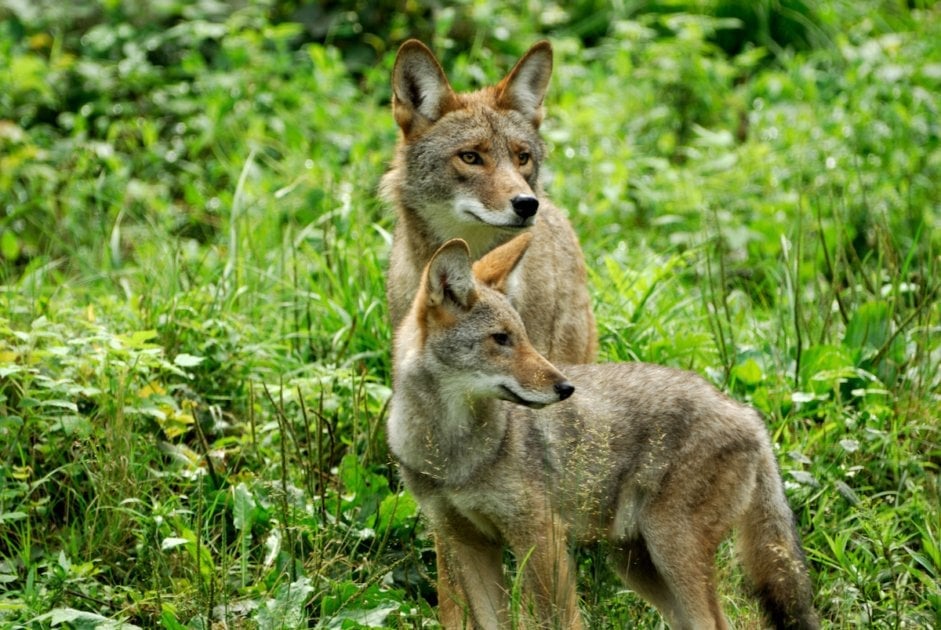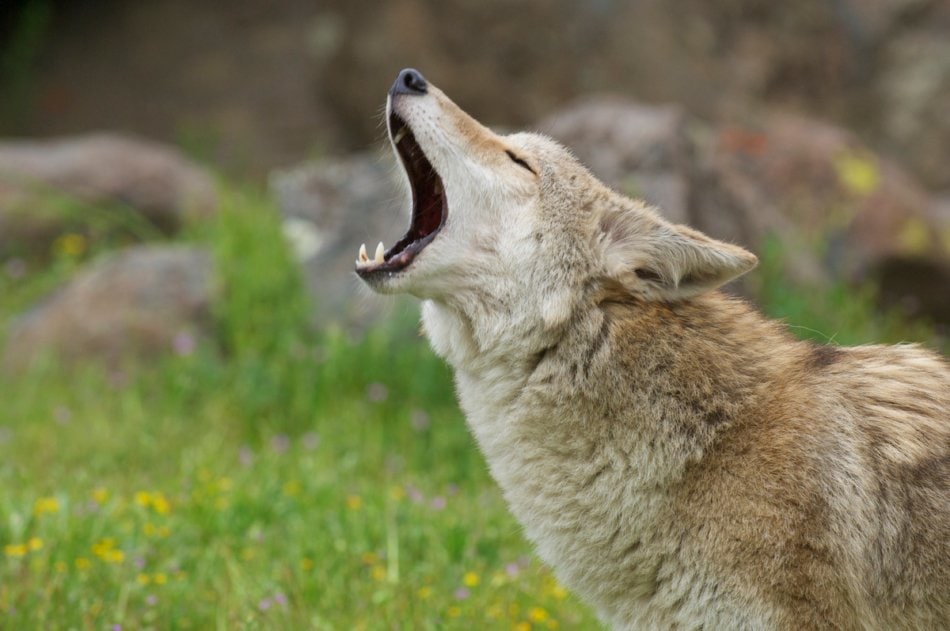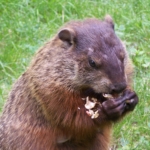Coyotes: Pests Against Cattle and Livestock
Keep coyotes at bay with these practical suggestions!

Wild animals are part of what makes nature so magical, and watching them can be highly enjoyable. While it’s important to coexist with animals in relative peace, they can cause countless problems when they take up residence in our homes or gardens. In this series, our Wildlife Management Specialist, Shawn Weeks, will educate us about some common household pests, and share some strategies for keeping them under control without dangerous chemicals or poisons.
Today we take a look at Canis latrans, the coyote.
Habitat and History
Originally, the coyote inhabited the western plains of the United States. The coyote now occurs throughout all of North America, one of only a few species of wildlife to do so. They are a member of the dog family of mammals, along with the fox and the wolf. The coyote is very adaptable, thriving in most habitats including grasslands and fields, forests, wetlands and suburbia.
Coyotes resemble German Shepherds, although, they have bushy tails, smaller feet, a long, tapered muzzle, and yellow eyes. They also appear to be more slender than a German Shepherd and they have large, pointed ears. Most coyotes weigh from 25 to 40 pounds, with adults male being generally larger than adult females.
Their fur is usually grayish in color with some variations of red, black, or blonde, depending on each individual animal. They all have a white or cream-colored underside. Most coyotes also have dark hairs on their back a black tipped tail.
Coyotes use a variety of vocalizations to communicate. They howl, yelp, growl, bark, wail, and squeal. They are probably best known for their high-pitched cry. Coyotes are most commonly heard at dusk and dawn. They have also been heard responding to sirens. Coyotes do not form packs, with the exception of mated pairs and their young. Mated pairs maintain their territories by scent marking and will defend that territory from other coyotes, as well as from fox.
Coyotes can run anywhere from twenty five to forty miles an hour. They are also excellent swimmers. Their sight, hearing, and sense of smell are very well developed.
Diet
Coyotes are opportunistic feeders that can survive on a variety of foods. They feed on rabbits, mice, voles, woodchucks, and on young livestock. They will also eat carrion, berries, fruits, vegetables, birds and insects.
Reproduction
Coyotes do not normally mate for life. Some pairs may however, stay together for a few years. Coyotes breed from January to March, and they give birth in approximately 63 days, anywhere from April to mid-May. The size of their litter depends on the age of the female and their environmental conditions. Generally speaking, they will give birth to between two and twelve pups. Both adults will care for the young and will relocate them if disturbed. The pups are weaned anywhere from six to eight weeks of age, and begin foraging and hunting with the adults between eight and thirteen weeks old.
The young generally disperse in the fall to mid-winter. Young coyotes can and will travel far distances to find their own territories. Most eastern coyotes will not breed until their second year, while western coyotes will breed in their first year.
Adults can dig their own den, or they will enlarge the den of another animal such as a woodchuck or a fox. The female prepares and maintains the den.

Problems, Solutions and Health Concerns
Being that coyotes are members of the dog family, they are susceptible to rabies, mange, distemper, and parasitic diseases in heavily populated areas.
The biggest problem with coyotes for humans is predation of livestock. Coyotes will attack a variety of livestock, with sheep and fowl being at the greatest risk. The other two problems of most concern are the predation of pets and the concerns for human safety.
Coyotes pose little threat to horses and cattle. It’s a good idea to install fencing and maintain it to keep coyotes at bay. Also keeping susceptible livestock and poultry penned and secured at night is your best defense. Guard dogs can also be used to keep coyotes at bay.
You should always remove and dispose of dead livestock and poultry promptly and properly. Leaving it out will attract coyotes. Remember, coyotes eat carrion, the dead carcass of an animal.
Some parts of the country allow the trapping and/or shooting of coyotes if they are killing your livestock. Be sure to always seek proper permits and follow state and local regulations in regards to this method of defense.
Coyotes often attack and kill pets, such as cats and small dogs. The best policy to prevent this is to always keep your pets in a fenced in area or under your direct supervision at all times. Homeowners should also always keep pet food and food scraps eliminated from their property, or at least properly disposed of.
Coyotes are abundant across North America and, in a lot of places, have become accustomed to humans. People with small children should never leave them unattended in the yard or on the property where coyotes are common. Teach your children how to identify coyotes and to walk away (never run) into the house, or climb up a swing or deck if a coyote is approaching them. With that being said, it is rare for coyotes to attack humans.
As with many other wild animals, coyotes are opportunistic. We should always be on the offensive, and use common sense when managing our properties. Preventive measures are always our best solution for dealing with our wild neighbors.
For further information, or advice in dealing with coyotes on your property, leave a comment below, e-mail me at [email protected].

Shawn Weeks
Shawn is a lifelong New Englander. He lives in Canton, Conn., with his wife Tami, mother, sister, and her three children. He and his wife have two grown children and two grandchildren. Shawn is an avid hunter, fisherman, and gardener. He is also a writer, a nuisance wildlife professional, small scale farmer, and scout leader. You can email him at [email protected].






Hello my son is doing a project about Coyotes and was asked when and where are coyotes pests any help?
hi, their is a pack of coyotes roaming my deer hunting land In new York, will these coyotes scare away the deer from my property?
Hello, I would love to have some direction and information on what to do with our coyote population (8) adults (4) young that lives in the area around the Prison where I work in California. The main issue is they are coming down from the foothills above us and walking around the parking lot without fear of the employees. The staff here has kept strict TN&R program with the Feral Kitty population and are proud of the dozen or so we have that we treat like family we don’t take home. The Executive Deputy Warden was pretty pissed when she saw a couple small kittens being carried off last Friday 6/21/13 and asked me if I could research some ideas we could take to keep the coyotes up in the hills before they are shot for coming down near the prison. We don’t want them to be killed and we surely don’t want our Feral Kitten population under attack by coyotes. Please Help!!! Thank You, Richard
Hi Richard,
Thanks for taking care of the feral cats, and also for understanding that coyotes are wild animals just following their natural instincts.
Here are some tips from the Humane Society on protecting feral cats from coyotes: http://www.humanesociety.org/animals/coyotes/tips/coyotes_pets.html
And on humanely discouraging coyotes from coming onto your property: http://www.humanesociety.org/animals/coyotes/tips/hazing_guidelines.html
You may be able to contact them for more suggestions.
Hello Shawn….I came across your site and was reading some interesting things from you and your readers. I live in Central Florida and yes we have coyotes. I am disabled and am not able to walk good and the new house we moved into the neighbors say to be careful because of the coyotes, Well, it has scared me and I fear for my pets. I have small dogs and cats. Opened the door this morning and could hear a bunch of them howling. It is not far away from the house unless the sound carries. My husband and I love the country life. Quiet and peaceful and just beautiful. But I do fear the coyotes. We have 25 acres and it is chain linked completely in. But as I read hear they can jump it. I am going to try the wolf urine and see how I do with that. Keep up the good work and will visit your site again.
we live in south Texas and have a BAD coyote problem…. every year, we lose all our baby animals to coyotes, and no matter what we do, we can’t seem to get rid of them. we have shot and snared a few over the past 4 years, but it obviously hasn’t helped at all… we own a 60 acre ranch will all kinds of livestock in different areas of the property. we have gotten guard llamas and donkeys, but they have turned out to be hay burners… we are considering a Great Pyrenees, but we are kind of hesitant after our other “””guard””” animals….. PLEASE HELPPPPP!!! thanks so much!
We live in Texas in a rural area on about 8 acres. We are surrounded by feral dogs, coyotes, bunnies, rats, etc. In fact, that’s one of the reasons I love living where we are because we are surrounded by wildlife. I guess I’m not the norm bcz I actually love the sound of the coyotes at night. They never get near enough to see and if we turn on a light or make a noise, they completely quiet. The only livestock we have are donkeys and they’ve never attacked any of them, probably bcz they have enough bunnies and rats to keep them fed. The only attacks and deaths we’ve had is feral dogs who hunt in packs and they are the most dangerous of all animals around here because they come out anytime of day to hunt and then back again if you don’t bury the dead deep enough, to finish feeding. I can understand the dismay of all the other commenters who have lost pets or livestock needless to say, but I wouldn’t trade living in the country for anything.
Tricia, you should take that deafening silence in response to your post as good evidence that your opinion is a little extreme even for this crowd.
Of all of the comments that popped into my head while reading your rant, this one seems to be the most relevant (and the most civil):
During the period from roughly 1980 to present, exactly 2 people have been killed by your unrestricted demons in the US and Canada.
During the same period, well over 600 people have been killed by domestic dogs.
And although the data isn’t readily available, it’s guaranteed that the number of cherished pets killed by coyotes is an even paler shadow of those killed by domestic dogs. Seems your Yorkie Poo, if not devil spawn him/herself, is at least closer kin than coyotes.
Seems that we peoples have really screwed the pooch (pun definitely intended) where this dominion over all the lesser creatures thing is involved. Shocking.
And just for the record, I’m all for controlling coyotes where we’ve invited them to become problem critters, as much for their sake as ours.
Here is what irks me to no end: We as dog owners are required to have our dogs get rabie shots and village tags, yet there are no “ordinances” when it comes to coyotes. The little bastards are allowed to roam free and if they kill a beloved pet? Oh well……Who makes these laws anyway?? It is infuriating that here in Illinois they are allowed to roam around with no consequences. Just last week (It’s 2013 now) there was a pack of them who jumped a guys fence in Riverside, IL and broke the glass on his patio door trying to get into the guys house – true story. I mean, what the hell? I am so sick and tired of hearing that “we must exist” with them, or “they were here first” Bullcrap. In the time of Adam and Eve man was given domain over everything that creepeth on the earth. How many beloved pets need to be killed or children for that matter before something gets done??? There are no restrictions on them – it is known they are predators, often times rabid have mange, and NOBODY does anything about it. Are you kidding me with this??? I love my dog. I have a small Yorkie poo. But “don’t hurt them” (coyotes)….”leave them alone” …….shooting them is against the law…….WHAT IS WRONG WITH PEOPLE???? Something has got to be done about this. I always keep up my dogs shots and such but these demons get to run free without fear of being hurt or trapped??? Really???
Wild animals don’t have to serve a purpose, although in this case they do because they deal with the rats that are attracted by human settlements. Domestic animals all share one common trait: we bred them to be dependant on humans. If you have a pet, you need to look after it. As for pests, I think we can agree that no species surpasses Homo Sapiens Sapiens to make life impossible or miserable for other species and even its own kind.
I live in the Clariemont are of San Diego only 4 miles from the ocean and there are plenty of coyotes here and they do run in packs. The other night I heard something get killed and ripped to shreds with the coyotes yelping and “screaming” all the time, it was really disgusting.
These coyote packs are more and more common, more and more brave and are killing local cats and small dogs.
I am all for wildlife but they are only here because of humans who live in the area and have the nerve to have pets and have trash cans.
I have lost any sympathy I had for these urban moochers. They have become dangerous to pets and children.
I know that they run in packs. i live on the edge of a wild life reserve. a large creek borders our land but its kinda in a gully. with cliffs and caves and all that. there are several large packs around here. i hear them every night and every morning. like clock work. the creek does a kind of horse shoe around us. they are in several spots surrounding us. and there are a lot of them. the howling starts on one end and works its way around the bend like they are talking to each other every night and morning. and sometimes they come so close that we can hear them in the house with windows and doors shut over the t v